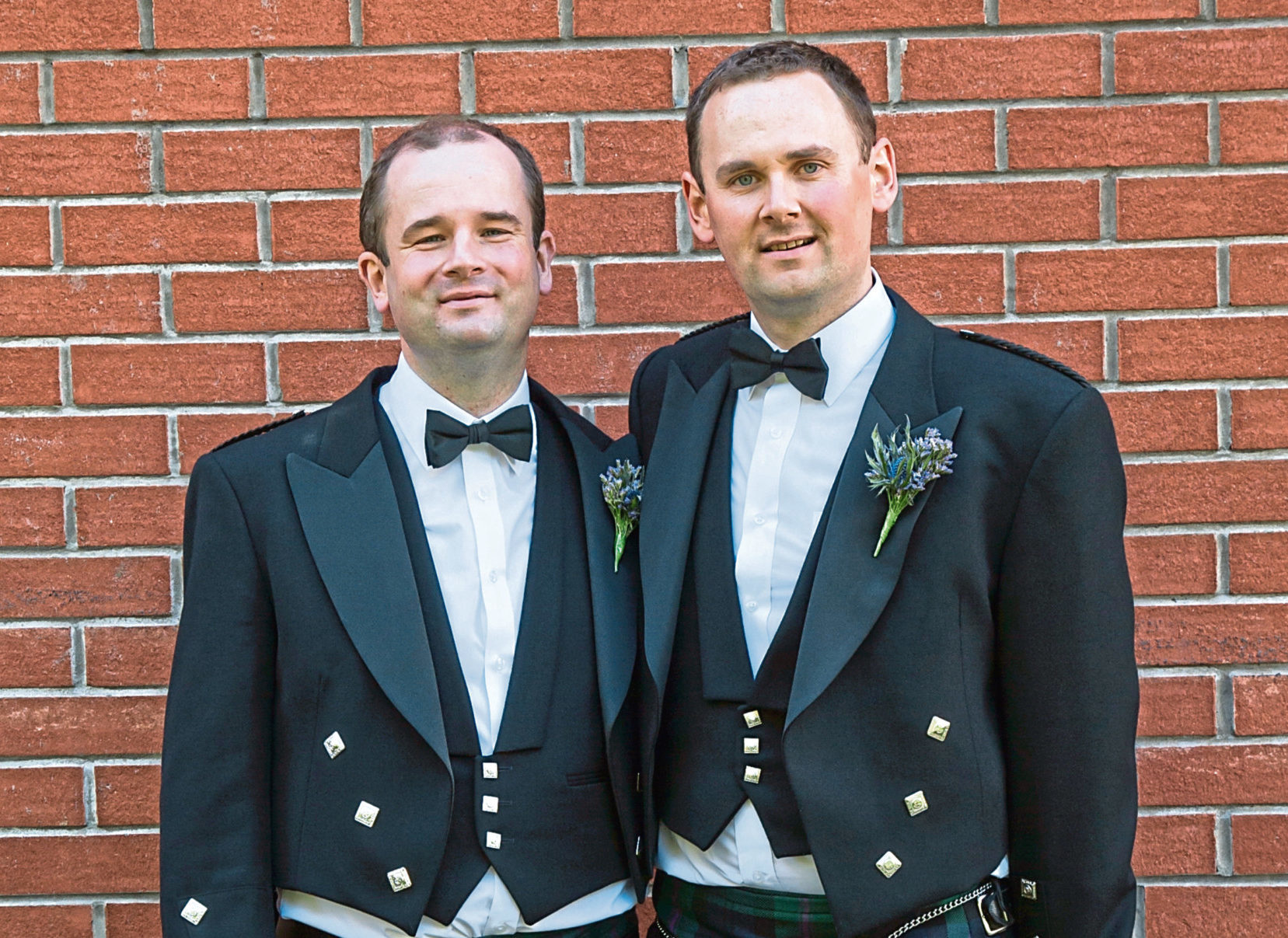
HE teaches students how to spot the life-threatening condition.
But, when Dr Michael Porter developed sepsis, it was his brother who made the diagnosis that saved his life.
Michael developed the potentially lethal condition after infection spread from a cut in his hand.
The sepsis was spreading through his body fogging his judgment in seeking urgent medical treatment.
Michael, 45, a lecturer in molecular genetics, was visiting his family in Newton Mearns, East Renfrewshire, when he became ill.
He said: “Two days earlier I had been repairing the lock on my garden gate, when I scratched my hand on a nail.”
The University of Central Lancashire lecturer added: “By the time I arrived in Glasgow I was feeling unwell, but I didn’t know just how ill I really was.
“I was fevered, exhausted and must have come over slightly confused. All warning signs of sepsis.
“My armpit was also sore which I now realise was caused by the sepsis killing the muscles in my arm, in a process called necrotising myositis.
“The sepsis was spreading through my body from the cut and was impacting on my judgment on spotting the symptoms.”
His brother Martin, an NHS consultant, was quick to spot the warning signs.
“He got me into a car and rushed me and my wife, Nicola, to Hairmyres Hospital, four miles away,” said Michael. In A&E he asked the vital question: ‘Could it be sepsis?’
“That triggered a series of tests and treatments.
“It included immediate intravenous antibiotics to give me any chance of survival.
“There was no time to lose in trying to stop the runaway train of sepsis which was threatening to kill me.”
Michael deteriorated so badly he slipped into a coma.
Nicola and the rest of his family were told he probably would not last the night.
But he held on, despite having to be resuscitated several times over the next two weeks.
His coma was to last three months.
Nicola, Martin and Michael’s parents, Linda and Joe, could only watch from his bedside in ICU as his body failed. In a desperate bid to keep his vital organs working, medics hooked him up to artificial respiration and kidney dialysis.
His face and body were almost hidden by the network of wires and tubes keeping him alive.
“I remember vivid dreams in which I was willing myself to live,” he said.
“I didn’t want to leave my family. I didn’t want to die.
“I was vaguely aware of what was going on around me but unable to emerge from the coma.
“I was so ill, my parents were considering arrangements for my funeral.
“All hope seemed to be lost.”
Nicola, 35, a university administrator, said: “Michael was so ill that some of the nurses could barely make eye contact.
“Others were advising us that he was most likely going to die. We had only been married three years and I thought I would lose him.”
When Michael emerged from the coma, he could hardly walk, and his weight had fallen from 12 stones to seven.
Most of his muscles had faded and he had to learn to walk again with the help of physiotherapists.
He fought his way back to health over a period of nine months.
Shortly after, he then returned to his university post.
Today, lecturing on spotting sepsis has become part of Michael’s life.
“I am completely honest that I had lectured on the subject, but became so ill I couldn’t see I had sepsis.
“I knew that it could be triggered by a simple cut or insect bite, as well as a chest infection causing pneumonia, a bladder infection, a leg ulcer or even flu, but I don’t think I had ever really taken it seriously.
“No one ever thinks they will fall victim.”
The Sepsis Trust warn that the vital signs are slurred speech or confusion, extreme shivering or muscle pain, passing no urine in a day, severe breathlessness and feeling like you are going to die. Skin can also become mottled or discoloured.
Michael added: “You don’t have to be a doctor to spot it.
“If you or someone you know has one or more of these symptoms, you must call the emergency services immediately and ask if this could be sepsis.”
Dr Ron Daniels, chief executive of the UK Sepsis Trust, said: “It is common to be confused by sepsis even when you are acutely familiar with the signs.
“That’s why it is vital for others to spot it and get you medical help immediately.
“We have to look out for each other.
“It’s true that even the slightest cut can allow sepsis to develop and kill. Yes, even a simple cut.”
For more information, visit sepsistrust.org

Enjoy the convenience of having The Sunday Post delivered as a digital ePaper straight to your smartphone, tablet or computer.
Subscribe for only £5.49 a month and enjoy all the benefits of the printed paper as a digital replica.
Subscribe